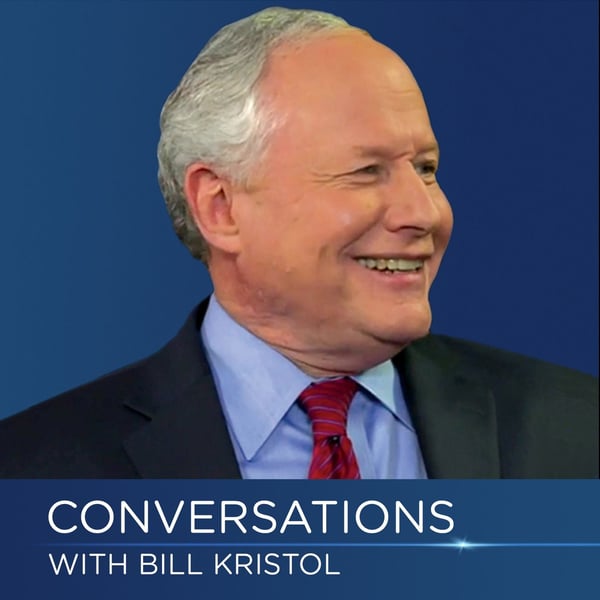Paul Cantor on The Western
Conversations with Bill Kristol
Conversations with Bill Kristol
4.7 • 1.7K Ratings
🗓️ 7 March 2020
⏱️ 90 minutes
🧾️ Download transcript
Summary
Transcript
Click on a timestamp to play from that location
| 0:00.0 | And the Welcome to Conversations, I'm Bill Crystal and I'm joined today by Paul Cantor as I've been several times before. |
| 0:21.0 | We've discussed topics ranging from Shakespeare to popular |
| 0:25.2 | culture in various forms and today we're going to talk about the Western. That's |
| 0:29.2 | okay with you? That's fine. I'm glad to do it. I am too. I've always been a fan of the Western and it's generally considered a great American jar I guess and so we'll talk about its history and in movies and maybe other little bit in other media as well but what is the |
| 0:45.8 | Western okay that's a very difficult question to answer and I've been thinking |
| 0:50.0 | about for years and I think I finally figured it out after writing three books on |
| 0:54.6 | popular actually in the course of writing this is going to hurt the sales of |
| 0:58.0 | the first of those three books if you only just forget it out now you know |
| 1:01.0 | well you learn while doing I'm going to try to separate popular |
| 1:06.3 | culture out into two broad categories and it's works that are set in the middle class world versus works that are set in |
| 1:16.4 | alternatives to the middle class world. It sounds overly simplistic, but let's see |
| 1:21.9 | if it works. That is, I think a lot of works in popular culture |
| 1:27.6 | are set in contemporary America, in a world that's both |
| 1:32.2 | basically middle class and its values, world that's a liberal |
| 1:35.8 | democracy. |
| 1:36.8 | Have in mind here things like situation comedies, romantic comedies, most shows about |
| 1:42.4 | professional life, doctors and lawyers and so on. |
| 1:46.4 | And what I'd say is in these works, the regime is invisible. |
| 1:51.1 | It's just there. It's what we ourselves live in and people accept it. |
| 1:56.0 | They don't notice its presence. |
| 1:58.0 | It's like fish and water. |
| 1:59.0 | They don't notice the water. |
... |
Please login to see the full transcript.
Disclaimer: The podcast and artwork embedded on this page are from Conversations with Bill Kristol, and are the property of its owner and not affiliated with or endorsed by Tapesearch.
Generated transcripts are the property of Conversations with Bill Kristol and are distributed freely under the Fair Use doctrine. Transcripts generated by Tapesearch are not guaranteed to be accurate.
Copyright © Tapesearch 2025.

